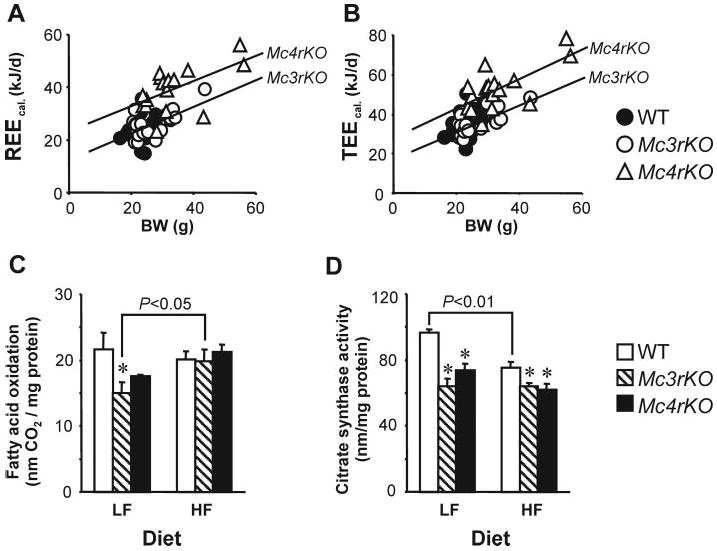Fig. 4.

Regression analysis of energy expenditure data and muscle oxidative metabolism of female Mc3rKO, Mc4rKO, and WT mice. Regression analysis of REEcal and TEEcal of female mice suggest reduced energy expenditure of Mc3rKO, relative to Mc4rKO, independently of differences in body weight (A and B). The differences in energy expenditure of female Mc3rKO and Mc4rKO, determined using calorimetry, did not correlate with skeletal muscle oxidative capacity. FAO (C) was significantly reduced in Mc3rKO fed the low-fat (LF) diet but not the moderately high-fat (HF) diet. Citrate synthase activity in skeletal muscle of Mc3rKO and Mc4rKO was lower compared with WT controls, irrespective of diet (D). Body mass data for mice shown in C and D are shown in Fig. 1, E–I. *, P < 0.05 compared with WT.
